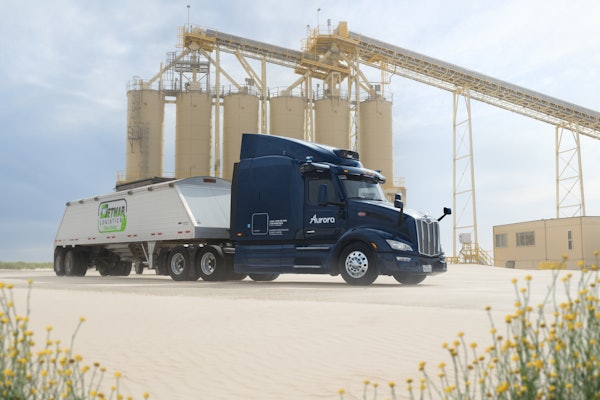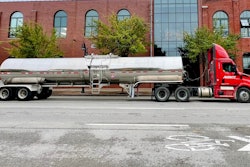At a quarry in Lime City, Ohio, drivers for Tri County Block & Brick ask loader operators to add a little more rock – and then a little more. Until recently, it was anybody’s guess if the vehicle was at capacity until it reached an inground scale.
“We want to come out of the loading area 100 percent productive, with the most payload we can legally carry,” says Mike Hitt, who maintains the Swanton, Ohio-based private fleet. But an overweight payload means more work and wasted time. “You have to return to the pile, dump stones and get back in line behind 20 or 30 trucks to reweigh,” Hitt says. “The extra time can cost you a whole load that day.”
Many fleets – private and for-hire – face similar challenges. Shippers of steel, lumber, agriculture and liquid or dry bulk product often judge their current and would-be transportation providers on a cost-per-pound basis. The more payload a truck carries, the lower the cost of transportation.
While loading, a driver could monitor the air pressure in the suspension of the tractor’s tandem axles; he then could approximate the vehicle’s gross combination weight (GCW). But this crude method offers no concrete evidence that the vehicle is being operated at maximum productivity.
Onboard load scales can eliminate such guesswork, helping drivers and fleets better manage their weights and provide a competitive cost advantage. These scales convert air pressure into actual weight – from pounds per square inch (PSI) to pounds – with a marginal degree of error. The payback from the technology, vendors say, comes from precision, efficiency and confidence of compliance.
One major difference among today’s onboard load scales is analog versus electronic, with each type having an advantage. For analog devices, the advantage is cost. Right Weigh recently launched a new line of liquid-filled onboard load scales; companies can purchase complete tractor and trailer sets for less than $200.
“We are attractive because we are affordable,” says Scott McColluch, Right Weigh marketing manager. “For fleets that are looking at buying a large number of units, this makes a big impact immediately.”
Electronic load scales are more expensive, but they offer more functionality. TruckWeight has designed SmartScale, a weighing system that communicates to a handheld reader wirelessly via short-range radio frequency. A handheld can be used by a forklift operator while loading the trailer. The system has a suggested list price of $550 for each sensor and $490 for the handheld receiver.
Since Tri County Block & Brick installed SmartScale, “We know we’re within a few hundred pounds of 80,000 every time we line up to weigh before leaving the quarry,” Hitt says. “We’ve increased our average payload per trip by almost a ton because we can quickly and easily check our weight right there at the loader.”
SmartScale produces readings once per minute, and every three seconds when the sensors detect the truck being loaded. The driver can monitor the handheld display from a safe distance and radio instructions to the loader operator, or the loader operator can hold the receiver and see the readings himself.
TruckWeight plans to launch a new platform next year to communicate sensor information – weight and identification number – to fleets’ mobile communication devices. Fleets can have an electronic record of what trailer is hooked to what tractor, as well as the trailer’s weight.
“It is an exciting project for us,” says Peter Panagapco, TruckWeight president. With this data, fleets will be able to monitor real-time weights on the truck, as well as on tractor-trailer combinations, for security and operational purposes. They also can improve the quality of their data analysis by relating fuel economy to the truck’s payload.
Air-Weigh already is offering weight information to onboard computing and mobile communication systems. Air-Weigh transmits tractor and trailer weight information to the vehicle’s J1708 communications channel, where it can be picked up by onboard computers and sent to the office; through this integration, weights can be reported alongside vehicle odometer and position. The company also has an alarm feature for a driver or loader outside of the vehicle to know automatically when a specified weight threshold has been reached.
Fleets can equip a tractor with Air-Weigh onboard scales for $880 and a trailer for $665, and prices go down with volume. Based on experience, fleets that use the system to eliminate check weighs three times a month can justify the cost, says Jim Morton, Air-Weigh product manager.
While air suspensions are prevalent in over-the-road operations, fleets often prefer spring suspensions for off-road applications such as refuse and logging. Vulcan On-Board Scales, one of the largest manufacturers of onboard scales, makes digital scales for both types of suspension systems.
The added functionality and convenience of electronic onboard load scales adds a premium price, but the difference in price from analog devices is driving demand for both types of solutions.










